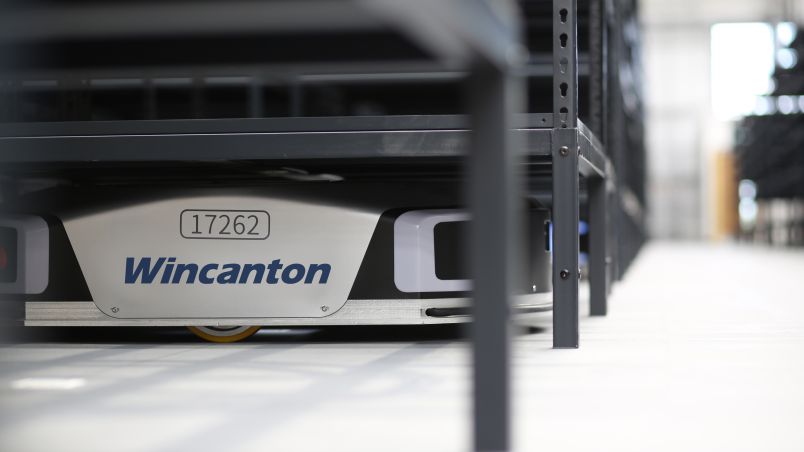
Imagine this. The only human contact your customer has when she buys something from you is with the team delivering it. She visits your website, looks at reviews, compares prices, checks you can deliver at a convenient time and clicks “buy”. Your warehouse management system fires into life and the product is on its way. So far - so good.
So what role does your brand play in this transaction?
If she never visits your store, never meets your highly trained sales people, only ever sees your website or the occasional advert then the people delivering your product suddenly become very important to you.
When and how the product gets to her could determine whether she ever buys something from you again, recommends you to her friends, reviews you positively or negatively, sharing her experience on social channels. Do you know who has your brand in their hands?
You can imagine it because it is happening every day. Retailers are in the middle of seismic change as more people choose NOT to visit their stores, not to meet their front line staff, not to be sold to. Every week we hear of more and more brands closing stores, cutting back and restructuring to tackle the challenge of how to make money in this new environment. Because at the same time they are gearing up to deliver more and more directly to the customer.
And because the customer is behaving differently, brands have to deliver differently too. If a delivery goes wrong, the consequences can be complicated. The worst possible outcome is the goods come back, the transaction is cancelled and the customer moves on somewhere else. The goods need to re-enter the supply chain. The customer needs to be credited. The goods need to be sold again. And delivered again. Assuming the reason they were returned means they are fit to be resold.
The best possible outcome is that the goods arrive. Let’s say it’s a television. The customer has researched the decision, found you, you are offering a good price and you can deliver in time for the football that weekend. Your team carefully and cheerfully carries it into the home. They unpack it, fix it to the wall, make sure it’s working, tune it into the customer’s satellite provider. The team notices that the customer doesn’t have a surround sound speaker to go with the television. They have one in the van. The customer agrees to try it out. The customer buys it there and then. That’s a great outcome.
Perhaps it’s a sofa you are selling – when it is unpacked – has a small blemish on the leather. It’s not visible when you are sitting down. But your team has noticed it, pointed it out to the customer and the customer knows it’s there. They are disappointed. But your team is trained for this and deals patiently with the customer, using a simple repair kit for exactly this eventuality – they have the skills to deal with the blemish right there. The customer is satisfied. No need to re-pack the sofa, take it back to the warehouse and thence to the factory to repair it. And book in another delivery. And risk negative comments on social media.
Or… you are selling nursery furniture. Your team carries it carefully in, and assembles it in the new nursery as an anxious parent looks on. They painstakingly check every fixing and explain the safety features in a calm and reassuring fashion.
A new way of thinking about deliveries
This new world, where the delivery team is now on the front line because no one is visiting a store, means we need to be thinking differently about who we hire and how we train them. Not surprisingly a clean driving licence and properly vetted background are still essential. But the rest of the canvas is blank. If you have the wrong people on the front line, undertaking the wrong type of deliveries without the right training, you are risking the reputation of your brand.
We know that we need people who have a whole range of practical and customer service skills to match. They may need to assemble things. They may need to give advice. They don’t just need deft handling skills to move packages around… they need deft customer handling skills too. Can they deal sensitively with customer questions and objections? Can they spot the opportunity to sell something else? Can they do that in such a way that the client is not upset by the offer? Do they know how to make simple repairs? Can they explain more about the product or service the customer has bought? If something else needs to happen as a follow up do they know how to make that happen with minimum of fuss? We can see a future where psychometric tests are just as important as that clean driving licence. Interestingly, the very people that are finding themselves out of work as a result of changes to the High Street could be the answer to the challenge.
"Over the past year we have seen how customer expectations have become much higher. Our customer technicians are spending much more time in people’s homes – several hours if they are assembling a room of furniture, for example – and it is increasingly important that they possess the right customer service skills. This includes introducing themselves, explaining processes fully and talking customers through warranty and guarantee forms."
"There is also increasing expectation that issues will be resolved at the point of delivery which requires specific skills. To reflect these changes, our training for staff has evolved. While the role still requires physical strength, we focus on equipping people with the right customer service skills they need to represent a brand in a customer’s home."
Tracey Clifford - Head of Home Fulfilment, Wincanton.
The best ones have the face to face experience of dealing with customers on the front line. They understand how to sell. They know how to deal with objections and resolve complaints on the front line. They can be trained to drive and to undertake practical repairs or installation. But it is harder to train the other way around. Soft skills, listening and people handling are much more difficult to acquire.
Behind these new people, new systems are needed too. To back up the staff on the front line seamless process has to be in place. But this is another challenge. Every warehouse management system, website and eFulfilment offer will be struggling to keep up with the pace of technological change affecting the industry.
Wincanton's role
Wincanton’s approach has been to abandon the legacy system approach of throwing the baby out with the bathwater when a system becomes obsolescent, or risking a TSB style catastrophe porting across from one system to another. We prefer the route of using Open Source technology in partnership with SMEs who have developed, trialled and tested radical new solutions to age-old logistics and delivery problems.
Our eFulfilment offer to back up the drivers delivers against a number of challenges. Firstly, a warehouse management system gives end-to-end order and customer service management, with full product traceability and the ability to rapidly scale-up to accommodate peaks in demand.
We use flexible, storage network features such as pick-pack-despatch, which all help retailers to grow quickly without investing heavily in fixed costs. It’s an innovative, integrated service which means that retailers can extend their range or diversify their portfolio without actually having to take stock into their own shops or warehouses.
Moreover, in a world where customers now expect a wide range of products from every retailer, supplier to customer delivery has the potential to transform online deliveries for a whole range of industries. Retailers can offer goods for sale, but delivery is executed straight from manufacturer to end consumer, removing the need for the retailer to stock inventory and minimising delivery touch points. And probably most importantly in today’s tight margin world, we manage how the customer returns products, swiftly refunding and recycling stock while helping the consumer to purchase alternative goods from the same retailer.
Together with the people at the front end, the delivery teams, this structure gives customers an option they can trust. They know that the delivery team is a core part of their brand, as focused on a successful customer experience as they are, and ready to replicate that every time. And if things do go wrong, highly trained to fix problems before they become more complicated, expensive and distracting.
This new generation of delivery people are taking the High Street to your customer’s front door and into their home. Your brand really is in their hands.




